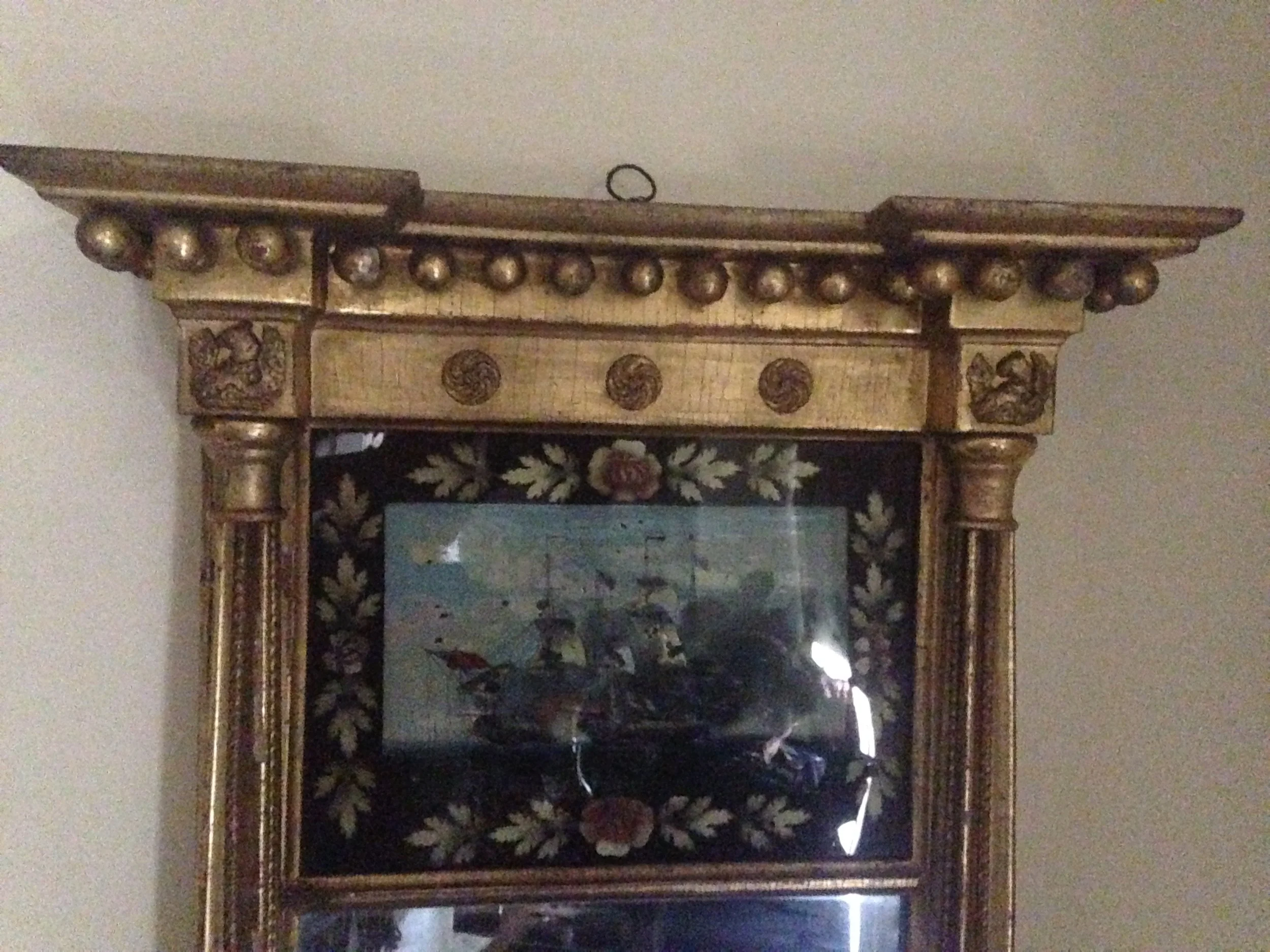Editor’s Note: This article is the first of three articles on the Avery-Downer House and its architecture in this 175th anniversary of the building. Bill Heyer is a classical architect from Columbus who has long been actively involved at the Robbins Hunter Museum. As a member of the Board in the early 2000's, he created measured drawings of the interior and exterior of the building and researched appropriate finishes. More recently, he designed the Knobel Folly, an appropriate addition to the Jill Griesse garden. On May 5, he will lead a walking tour of downtown Granville with emphasis on Avery-Downer House and St. Luke's Church.
Why did Alfred Avery build a Greek temple for a house? Granville had a tradition of building classical wood clapboard, brick and stone houses dating back to before its founding as a village, but none of these was such a temple! It is really kind of shocking, come to think of it, that the hinterland of the young United States would come to be dotted in the 1840’s with Greek temples that farmers, bankers, millers, and entrepreneurs would live in!
The notion that a young family would live in a Greek temple in America is quite reasonable and beautiful, actually. These young Americans in the first half of the 19th century prided themselves on their new democratic republic—a form of self-government that had its origins in ancient Greece. These young Americans also believed in individual rights quite apart from any monarchy, aristocracy, or other system of oppressive government. Hence, man was a special creature, endowed by the Creator with rights and value above and beyond royalty.
In a way, a farmer living in a Greek temple on his fertile and utopian property in Ohio or upstate New York was a symbol of the integrity, autonomy, economy, and sacred value of the human person. Wow, yes, even farmers knew they had as much value—if not more—as human beings than the monarchs of old England or France. They wished to celebrate it in their lives and especially their homes.
For the 20 years before Avery built his temple, there actually was a so-called classical revival in Ohio wherein temples—albeit somewhat clumsy and delicate—were indeed built as houses. Travel to Norwalk and see the 1835 Sturgis-Kennan-Fulstow House with its odd elongated octagonal piers, or in Cincinnati visit the 1820 Sinton-Taft house (Taft Museum) with its elongated columns spread like curtains in pairs. Jonathan Goldsmith in Cleveland had built several of these temple houses also, but this style was fairly uncommon.
In the 1820’s and 1830’s, thanks to the recent rediscovery of Greece and the publication of its ancient temples, Greek temple houses became all the rage in places like upstate New York; from Randolph near Chautauqua to Geneva in the Finger Lakes Region (see the fantastic Rose Hill Mansion), to Syracuse, Troy, and on to Albany and into New England. It was popular also in eastern Pennsylvania (see the great Andalusia estate near Philadelphia) and around the Mid-Atlantic and into the South. Greek temples began to be seen in Columbus with designs of the Alfred Kelley House (1836), the State Capitol (1839), and the Columbus Lunatic Asylum (1838), all of which Alfred Avery would have been familiar with through his travels and business ventures.
Alfred Avery began his entrepreneurial career in Granville as a drover taking livestock to eastern markets like his future business partner and brother-in-law Lucius Mower. On their travels, they would have seen some of the stately Greek Revival mansions being built and possibly had come in contact with other businessmen who were commissioning their own temple houses. Further, they quite possibly would have been introduced to the architectural pattern books of Asher Benjamin, John Haviland and others that were widely disseminated in the early 19th century. From all accounts, the tradition of grand domestic architecture was something any young aspiring entrepreneur like Avery would have been interested in at this time.
Later, Avery, in business partnership with Lucius Mower and others, established a furnace works, a grist mill, and a near majority contract in the new 1827 canal system that extended from Cleveland to Newark. And, although at this time he had been living in two other houses on Broadway, it was this canal venture that quite possibly fixed Avery’s goal for building not just a grand Grecian house, but a temple house on East Broadway.
Avery came to acquire the double lot at 221 E. Broadway about 1837, about the same time he helped organize and complete a building campaign for his own church, St. Luke’s Episcopal. Avery would have been instrumental in the selection of architect Minard Lafever and craftsman Benjamin Morgan to guide the congregation through the design and building process, the result of which was an outstanding example of ecclesiastical Grecian architecture. Avery subsequently hired Morgan to design and build his own home, introducing Granville to the new Grecian temple house. Benjamin Morgan, for all that is known, had not built a temple house before although he was familiar with Lafever’s temple house designs from pattern books. Lafever himself—although there is no evidence for this—may have communicated with Avery and/or Morgan about the design of the house as he had for St Luke’s.
But, wait. There is something missing here! How did Avery find and select Lafever and Morgan in the first place? What was the connection that put these men together for the building of arguably the two most important architectural landmarks in the village of Granville? This is where the canal venture just may have played a decisive role in bringing Alfred Avery, Minard Lafever, and Benajmin Morgan together.
To be continued!









































